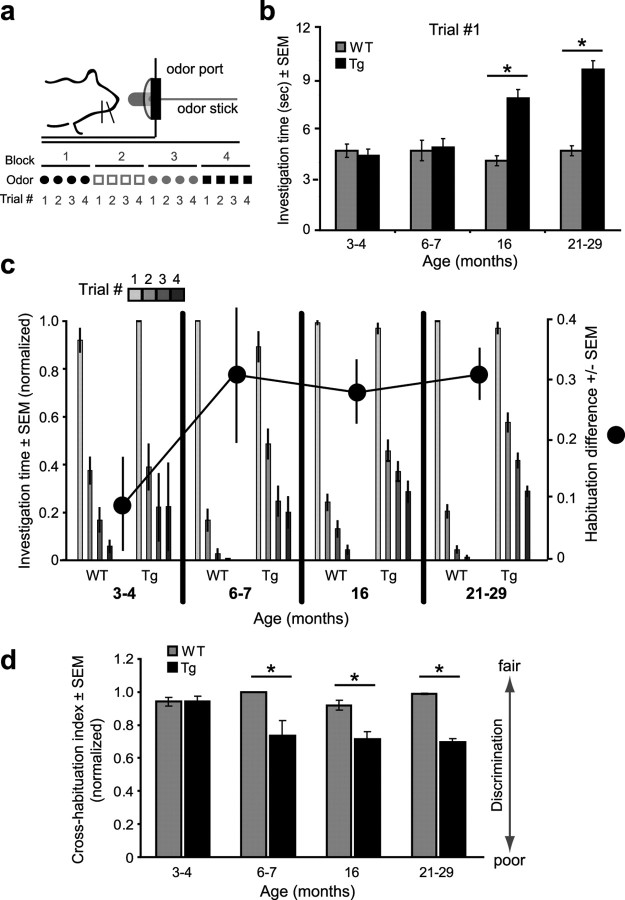Figure 1.
Progressive and age-dependent emergence of AD-like atypical olfactory behavior in APP transgenic mice. Results from an odor cross-habituation test from 3- to 4-, 6- to 7-, 16-, and 21- to 29-month-old Tg2576 (Tg) and age-matched control mice (WT) (for sample sizes, see Materials and Methods). a, Odor cross-habituation task design. Odors were presented by saturating an “odor stick” with odor, placing this inside a hollow plastic tube, and inserting this into a stainless-steel “odor port.” Odors were presented in blocks of four successive trials (see Materials and Methods). b, Investigation times for all trial 1 odor presentations. *p < 0.0001, Tg versus WT. c, Odor habituation (normalized) (see Materials and Methods) across four successive odor presentation trials (bars). Habituation difference (dots) indicate the difference between the genotypes (WT vs Tg) within each age group in their percentage habituation across all four trials (see Materials and Methods). d, Cross-habituation indices (discrimination) of Tg and WT mice. Cross-habituation index, The difference between the duration of the previous trial 4 odor investigation compared with that of the following trial 1 presentation. *p < 0.0001, Tg versus WT. All statistics are ANOVA followed by Fisher's PLSD. Error bars indicate SEM.

